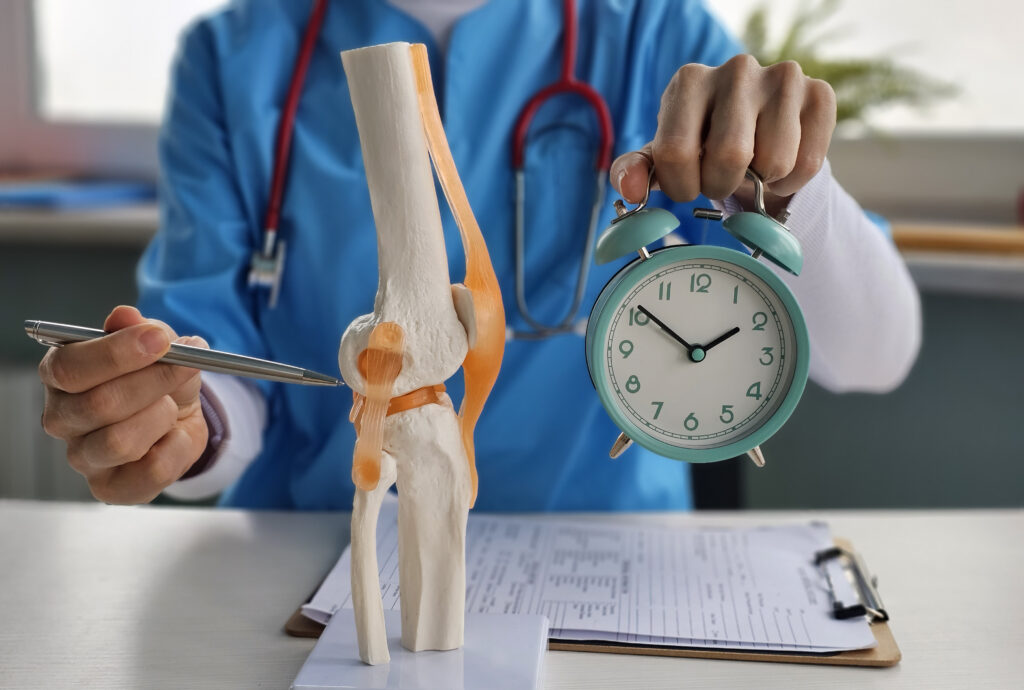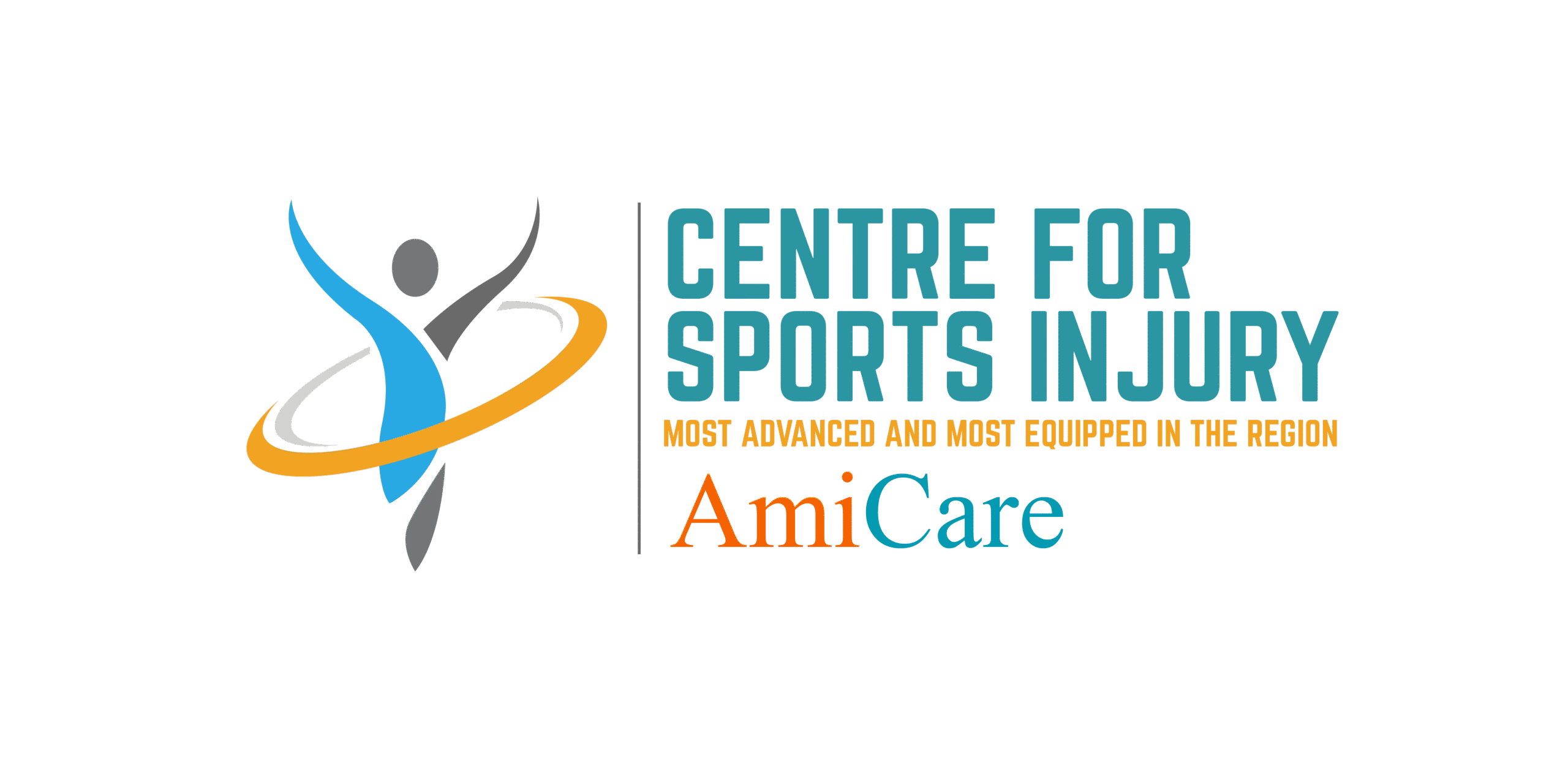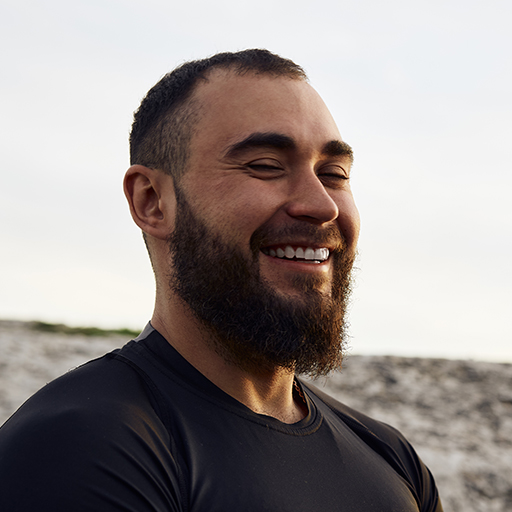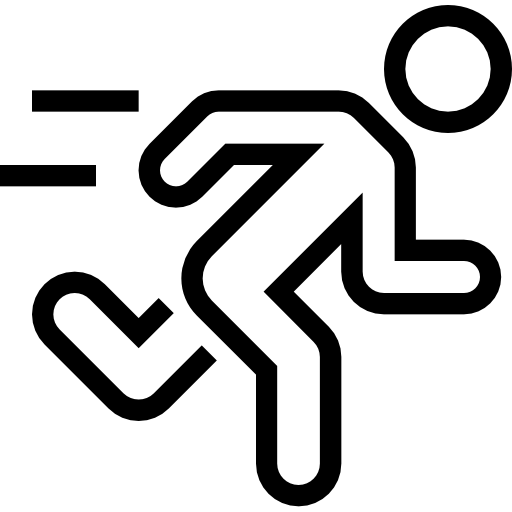Shoulder Dislocation
Dislocated Shoulder Surgery in Ghaziabad
A shoulder dislocation is one of the most common orthopedic emergencies — often resulting from sports injuries, falls, or high-impact accidents. When the upper arm bone (humerus) slips out of its socket (glenoid), it can cause severe pain, swelling, and immediate loss of function. Without proper treatment, it may lead to repeated dislocations, chronic instability, and even arthritis in the future.
If you have suffered a dislocation or struggle with recurring shoulder instability, Dislocated Shoulder Surgery in Ghaziabad can provide lasting relief and restore full mobility.
Dr. Himanshu Gupta, a leading orthopedic and shoulder surgeon in Ghaziabad and Delhi NCR, specializes in advanced arthroscopic and open shoulder procedures. With a patient-first approach, precise diagnostics, and personalized rehabilitation plans, he ensures optimal outcomes for both first-time injuries and complex recurrent cases.

Understanding Shoulder Dislocation
The shoulder joint is the most mobile joint in the human body, allowing a wide range of arm movements. However, this flexibility also makes it more prone to dislocation than any other joint.
A shoulder dislocation happens when the “ball” (humeral head) moves completely out of the “socket” (glenoid). In some cases, partial dislocations (subluxations) occur, where the ball slips out and then returns on its own.
Types of Shoulder Dislocation
- Anterior Shoulder Dislocation – The most common type, where the humeral head moves forward out of the socket. This typically occurs due to falls, sports tackles, or arm twisting injuries.
- Posterior Shoulder Dislocation – Less common, often linked to seizures, electric shocks, or heavy falls. The humeral head moves backward out of the socket.
- Inferior Shoulder Dislocation – Rare and often caused by extreme overhead force, leaving the arm stuck above the head.

Notice the Signs Before It’s Serious
Know the signs of shoulder dislocation before it’s too late.
Sudden Knee Pain or Swelling
Sharp pain or visible swelling develops shortly after a fall, heavy lift, or sudden arm movement.
A Sharp “Pop” Sound
You may feel or hear a click/popping sound when moving the arm, especially during overhead activities.
Instability in the Knee
Your shoulder may feel loose, like it could slip out of place, or be unable to bear weight during lifting or rotation.

Symptoms of a Dislocated Shoulder
A shoulder dislocation can be extremely painful and visibly deforming. Patients often report:
- Intense pain immediately after injury
- Visible shoulder deformity or asymmetry
- Limited or complete loss of motion in the arm
- Swelling and bruising around the joint
- Numbness or tingling in the arm or hand due to nerve involvement
- Weakness or instability when trying to lift or rotate the arm
Tip: If you suspect a dislocation, do not try to push the shoulder back into place yourself — improper handling can worsen the injury. Seek immediate medical attention.
ACL Injury & Reconstruction Surgery


Causes & Risk Factors
The most common causes of shoulder dislocation include
- Falls directly onto the shoulder or an outstretched arm
- Contact sports (football, rugby, wrestling, kabaddi)
- Overhead throwing sports (cricket, volleyball, swimming)
- Road traffic accidents
- Seizures or electric shocks (more likely for posterior dislocation)
- Loose or lax ligaments (genetic or from past injuries)
Surgical Options for Shoulder Dislocation
Dr. Himanshu Gupta offers a range of advanced surgical techniques tailored to the patient’s specific injury type and activity level.

Arthroscopic Bankart Repair
- Best for: Anterior shoulder dislocations
- Minimally invasive surgery using a small camera (arthroscope) and instruments
- The torn labrum and ligaments are reattached to the bone to restore stability
- Benefits: smaller scars, less pain, faster recovery

Latarjet Procedure
- Best for: Significant bone loss from the glenoid rim
- Transfers a piece of bone (coracoid process) to the front of the socket to prevent future dislocations
- Common for athletes with high recurrence risk

Open Shoulder Stabilization Surgery
- Best for: Severe or complex cases where arthroscopy is not sufficient
- Allows direct repair of both bone and soft tissue structures
- Often used for an inferior shoulder dislocation or failed previous surgeries

Posterior Stabilization Surgery
- Best for: Posterior shoulder dislocation
- Repairs damaged structures from the back side of the joint to restore alignment
Non-Surgical Treatment Options
For first-time shoulder dislocations, surgery is not always necessary. The initial treatment usually includes:
- Closed Reduction – A controlled medical procedure to gently guide the humeral head back into the socket
- Immobilization – Wearing a sling for 2–4 weeks to allow healing of soft tissues.
- Pain & Swelling Management – Using ice therapy, anti-inflammatory medications, and rest.
- Physiotherapy – Gentle exercises to restore motion, followed by strengthening exercises to stabilize the joint.
Important: Returning to sports or heavy activities too soon can increase the risk of recurrence.
WHY CHOOSE SHOULDER DISLOCATION SURGERY VS. OTHER OPTIONS
The table below compares surgical and non-surgical treatments for shoulder dislocation to help patients choose the most effective path to recovery. Consult an orthopedic specialist for a personalized treatment plan.
| Treatment Option | How It Works | Ideal Candidates | Recovery Time | Key Benefits | Limitations |
|---|---|---|---|---|---|
| Shoulder Stabilization Surgery | Repairs or tightens loose ligaments and joint capsule using minimally invasive arthroscopic or open techniques. | Patients with repeated dislocations, significant ligament damage, or instability during sports/overhead activities. | 4–6 months | Restores full stability, reduces recurrence risk, and supports long-term joint health. | Surgical risks (low infection rate, graft failure), requires strict rehab. |
| Physical Therapy | Strengthens muscles around the shoulder to improve stability and control. | Patients with first-time dislocations or mild instability without major ligament damage. | 2–4 months | Builds muscle support, improves joint control, avoids surgery. | May not prevent recurrence in high-demand activities; risk of repeated dislocation. |
| PRP Therapy | Uses platelet-rich plasma injections to promote healing of damaged tissues. | Patients with minor ligament or capsule injury after dislocation. | 1–3 months | Promotes natural healing, minimally invasive, can be combined with rehab. | Limited evidence for preventing future dislocations; less effective for severe damage. |
| Bracing or Taping | Uses supportive devices to limit excessive movement and prevent re-injury during activity. | Short-term use for mild instability or during early rehab after first dislocation. | Varies (weeks–months) | Easy to use, non-invasive, provides immediate support. | Does not fully restore stability, not suitable for frequent or severe dislocations. |
YOUR RECOVERY JOURNEY AFTER SHOULDER DISLOCATION
Recovery from a shoulder dislocation can take 6–12 weeks for mild cases and longer for severe or recurrent dislocations. The exact duration depends on the extent of injury, any associated ligament or cartilage damage, and your rehabilitation progress. A structured rehab plan helps restore stability, prevent re-injury, and get you back to normal activities safely.
Detailed Recovery Phases
Weeks 1–2: Rest, ice, sling support to immobilize the joint and reduce swelling.
Weeks 2–4: Begin gentle, pain-free range-of-motion exercises under supervision.
Weeks 4–6: Start light strengthening of rotator cuff and scapular stabilizers to protect the shoulder.
Weeks 6–8: Progress to advanced strengthening and functional training for daily activities.
Weeks 8–12: Return to sports, overhead work, or heavy lifting once cleared by your doctor.

Why Athletes Trust Our Sports Injury Centre
Amicare Hospital is trusted by 750+ athletes across Delhi NCR for expert shoulder dislocation treatment and sports injury care. With state-of-the-art facilities and a high success rate under the guidance of Dr. Himanshu Gupta, we focus on restoring stability, preventing recurrence, and helping you return to your sport or active lifestyle with confidence.

COST OF SHOULDER DISLOCATION TREATMENT
The cost of shoulder dislocation treatment depends on the severity of the injury, whether surgery is needed, and the length of hospital stay. At Amicare, we provide clear, personalized cost estimates tailored to your treatment plan.
The cost of treating a shoulder dislocation varies depending on the severity of the injury, type of treatment, and hospital stay. At Amicare, we provide transparent, personalized cost estimates tailored to your needs.
Type of Treatment: May include closed reduction (non-surgical realignment), arthroscopic repair, or open surgery for ligament or labrum injuries.
Surgical Method: Minimally invasive arthroscopy or traditional open repair, depending on the extent of damage.
Hospital Stay: Same-day discharge for non-surgical treatment or 1–2 days for surgical recovery and monitoring.
For a personalized estimate, contact us. We aim to make shoulder dislocation treatment both effective and affordable.

INJURY PREVENTION TIPS FOR ATHLETES
To prevent shoulder dislocation, strengthen stabilizing muscles, warm up with dynamic stretches, use proper sports technique, and avoid repetitive overhead movements without conditioning.
Recovering from a shoulder dislocation requires proper care and guided exercises. Dr. Gupta shares simple tips:
Early Mobility: Start gentle, supervised range-of-motion exercises to prevent stiffness.
Strength Exercises: Progress to resistance training for rotator cuff and scapular stability as advised by your physiotherapist.
Proper Technique: Use correct posture and controlled movements in daily activities to protect the healing joint.

COST OF SHOULDER DISLOCATION TREATMENT
The cost of shoulder dislocation treatment depends on the severity of the injury, whether surgery is needed, and the length of hospital stay. At Amicare, we provide clear, personalized cost estimates tailored to your treatment plan.
The cost of treating a shoulder dislocation varies depending on the severity of the injury, type of treatment, and hospital stay. At Amicare, we provide transparent, personalized cost estimates tailored to your needs.
Type of Treatment: May include closed reduction (non-surgical realignment), arthroscopic repair, or open surgery for ligament or labrum injuries.
Surgical Method: Minimally invasive arthroscopy or traditional open repair, depending on the extent of damage.
Hospital Stay: Same-day discharge for non-surgical treatment or 1–2 days for surgical recovery and monitoring.
For a personalized estimate, contact us. We aim to make shoulder dislocation treatment both effective and affordable.

INJURY PREVENTION TIPS FOR ATHLETES
To prevent shoulder dislocation, strengthen stabilizing muscles, warm up with dynamic stretches, use proper sports technique, and avoid repetitive overhead movements without conditioning.
Recovering from a shoulder dislocation requires proper care and guided exercises. Dr. Gupta shares simple tips:
Early Mobility: Start gentle, supervised range-of-motion exercises to prevent stiffness.
Strength Exercises: Progress to resistance training for rotator cuff and scapular stability as advised by your physiotherapist.
Proper Technique: Use correct posture and controlled movements in daily activities to protect the healing joint.
Frequently Asked Question
Usually 1–2 hours, depending on the complexity of the injury.
Yes, especially for first-time dislocations, but recurrent cases often require surgery to prevent further damage
Anterior shoulder dislocation accounts for around 90% of all cases.
With modern techniques and proper rehab, recurrence rates are very low.
Typically, 4–6 months post-surgery, once your surgeon and physiotherapist approve.















